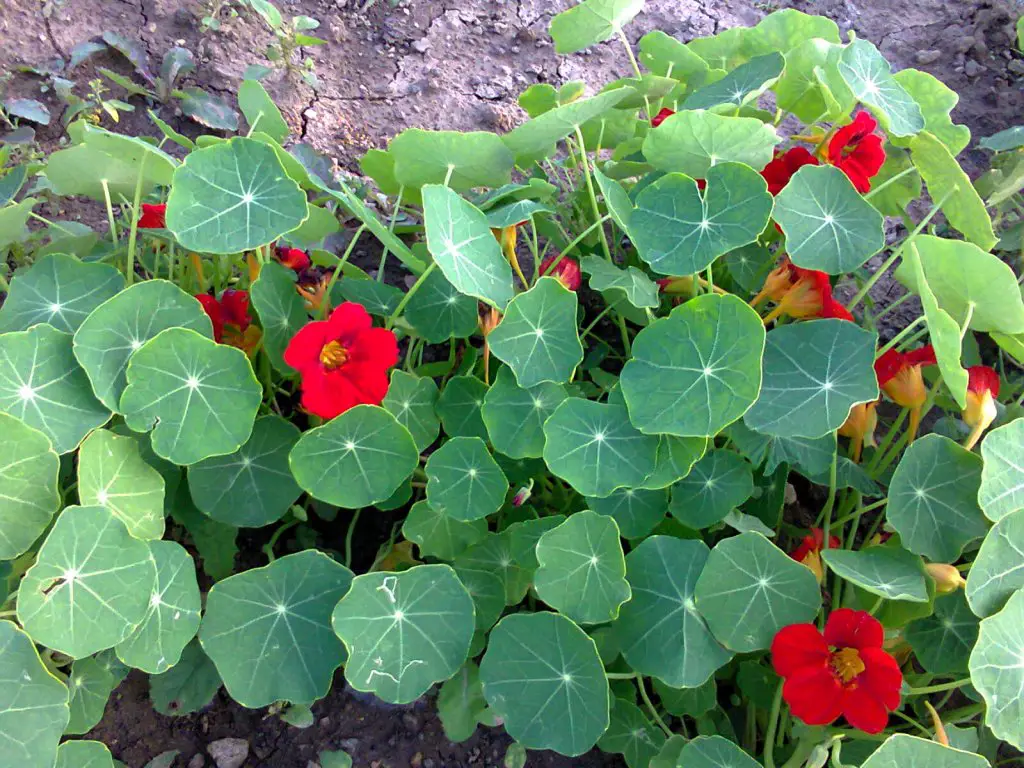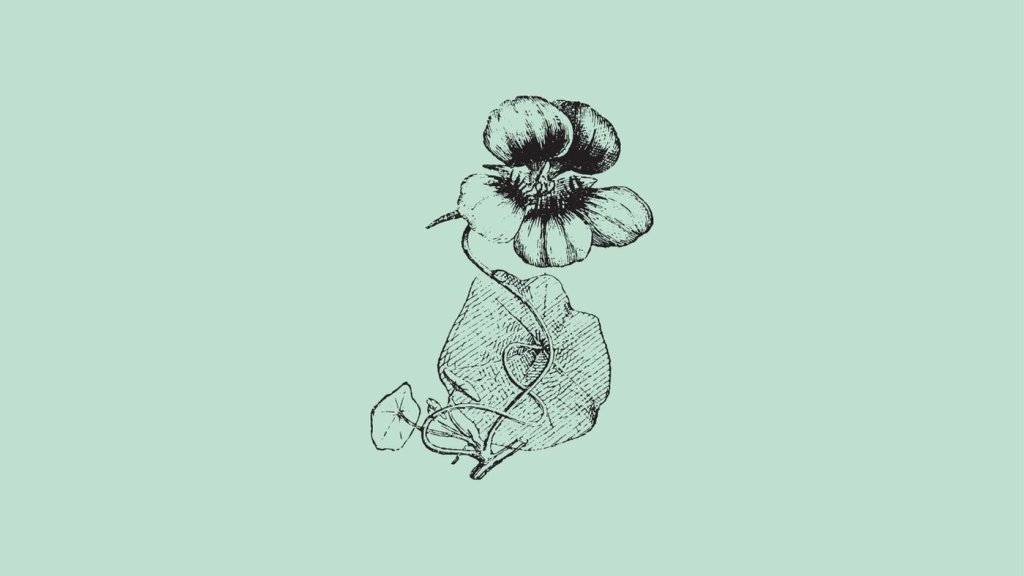Tropaeolum majus, otherwise commonly known as nasturtium, belongs to the family Tropaeolaceae. There are several varieties with colors ranging from white, yellow, red, and orange flowers. Tropaeolum majus is the climbing variety of nasturtiums that grow up to 8 feet tall, making them ideal in potted hanging baskets or as covering on fences.
Other common names for this stunning plant are Indian cress, Mexican cress, Peruvian cress, and garden nasturtium.
Tropaeolum majus is used as both a decorative and edible plant.
Where to Find Nasturtium?
Tropaeolum majus is native to South America in regions such as the Andes mountains, where they can be found growing wild.
What Are You Foraging For Right Now?
We're thrilled to hear your ideas. What would you like to submit today? Feel free to share your thoughts and experiences with us.
They can also be purchased at your local nursery, as they grow well in most climates in North America, providing they have full sun.
Is Nasturtium Toxic to Dogs or Humans?
Nasturtium is not toxic to humans.
However, dogs may develop an upset stomach, vomiting, and/or diarrhea if consumed in large amounts.
Can You Eat Nasturtium?
The whole plant is edible, including the leaves, flowers, and seedpods. Nasturtium have a peppery taste, the leaves being the mildest and comparable to watercress in a salad.
The flower buds, or the center of the flower, are the most flavorful as it contains mustard oil which gives it a spicy, pungent flavor.
Nasturtium flowers and leaves can be eaten anytime during their growing season. The younger they are picked, the more tender and better the flavor as the peppery taste intensifies as they grow.
The nasturtium seeds should be picked early if they will be consumed, as they tend to harden as they mature.

How to Use Nasturtium in Recipes
The most common use is in salads. The nasturtium flowers and leaves can be chopped and tossed in raw. This is the recommended method for those new to cooking with nasturtium.
The flower buds with their mustard oil have the most flavor and are often used as a seasoning in recipes such as vinaigrette dressings, sauces, and tea.
Raw seedpods are similar in texture to capers and can be substituted for a more peppery taste.
As you become more familiar with the uses of Tropaeolum majus in the kitchen, try experimenting.
It can be added to soups, pizza, and broths. There are several recipes with nasturtium as the star of the main dish, such as in stuffed nasturtium leaves (much like the Greek stuffed grape leaf).
And with any dish, add a few whole nasturtium flowers for an elegant final touch.
Does Nasturtium Have Medicinal Benefits?
Tropaeolum majus has many medicinal benefits, such as:
- Anti-fungal
- Anti-bacterial
- Anti-microbial
- Antioxidant
- Aids in healing wounds
- Cough expectorant
- Antiseptic
- Disinfectant
- High in vitamin C
Tropaeolum majus can be made into a tea or tincture and helps treat urinary tract infections, bronchitis, sinusitis, colds, kidney infections, and other respiratory and infectious diseases.
How is Nasturtium Helpful in the Garden?
Nasturtiums are excellent companion plants for your garden and should be planted near bean, cabbage, melon, pumpkin, radish, kale, cucumber, and broccoli.
They also work as a border around gardens to deter deer and other pests. Deer don’t like nasturtiums, while aphids and other garden pests will munch on them instead of your vegetables.

Does Nasturtium Attract Pollinators?
Planting nasturtium is good for the environment because they attract pollinators.
Nasturtium flowers are bright in colors and contain a nectar spur which draws butterflies, bees, and hummingbirds to the plant to gather the nectar.
How Is Nasturtium Used in Decor?
Nasturtium flowers have a robust and pleasant fragrance. They are a fast-growing climbing plant which makes it ideal for landscaping, adding a touch of antique cottage garden charm to your yard.
They may also be cut fresh from the stem and put in a vase. When brought inside, their sweet fragrance will drift throughout your home.
How to Grow Nasturtium?
Tropaeolum majus prefers full sun and cooler climates to hot, dry regions. They do best in a well-draining, slightly acidic soil with mild to poor fertilization.
Nasturtium seeds can be purchased at nurseries, stores, and online. They can be started outdoors when the possibility of frost has passed or indoors 4-6 weeks before being ready to plant outdoors.
Nasturtiums prefer low or mildly fertilized soil, so take care not to fertilize too much, or it increases foliage while decreasing blooming. Ideally, the soil should be between 55-65 degrees Fahrenheit. Sow a half-inch deep 10-12 inches apart.
Tropaeolum majus can tolerate dry spells but prefer moist soil. Be sure to water often, but do not overwater. This causes less blooming and a duller flavor. Too much heat also stresses the plant, causing them to stop blooming while increasing the spicy flavor.
If you want to save your nasturtium seeds, allow the seedpods to grow to full maturity (about the size of a chick pea). They will naturally fall off the vine when ready to be collected.
Clean them off, dry them out, and store them in an envelope in a cool, dark place. Then replant in the spring!
Nasturtiums are annuals but can be a perennial in frost-free zones.
Rachel Schmeltzer is a writer, mom, teacher, and dreamer. She enjoys reading, traveling, history, spending time with her boys and her cats, and foraging in the woods of Minnesota.

